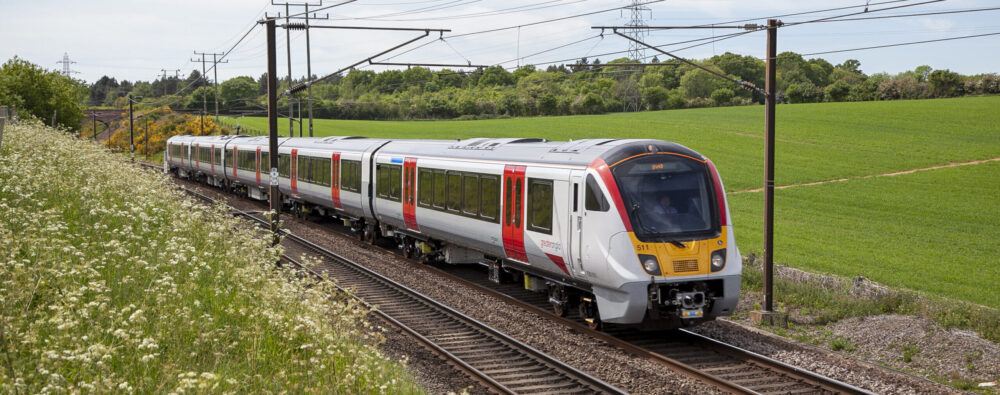Pandemic doesn’t stop Greater Anglia’s new trains testing programme
June 18, 2020

Performance and safety tests on Greater Anglia’s brand-new electric commuter trains are continuing – despite the coronavirus pandemic.
Greater Anglia is currently replacing every single old train with brand new state-of-the-art modern trains, including 111 trains from UK train manufacturer Bombardier.
There are now four Bombardier trains on the Greater Anglia network, but before they can go into passenger service, they have to undergo a series of safety and performance tests.
Those tests have been continuing – with the new trains programme team taking advantage of a reduced passenger service due to the pandemic, which has made more time available on the network for test runs.
Ian McConnell, Greater Anglia Franchise and Programmes Director, said: “We have to test trains’ equipment, such as the pantograph – which connects the train to the overhead wire to get power, doors, passenger information system and other on-board systems.
“We carry out checks to see how the trains interact with signals and overhead lines and we need to see how they perform at different speeds across the routes where they will be in passenger service.
“We’re looking for any faults that might develop after the trains have put some miles on the clock as we want to make sure that once they’re in service, they’re as reliable as possible.”
Will Tanner, Bombardier Transportation Communications, Director said: “We can’t wait to get these British-designed and -built trains into service, but state-of-the-art trains means it’s even more important to test everything before passenger service begins. We and Greater Anglia are working as a team to make the most of the extra time available to us on their network.”
Recent tests have included electromagnetic compatibility testing across the whole network – including Hertford East, Norwich, Southend, Cambridge and Ipswich – to check how the trains interact with signals and overhead lines.
Engineers have also been carrying out “shakedown” testing to check the general performance of the trains before starting formal “fault free running”, when the trains have to go a requisite number of miles without any faults to get ready for passenger service.
Testing has also begun on two five-carriage trains coupled together into a ten-carriage train.
The Office for Rail and Road has now authorised the five-carriage trains as suitable for passenger service as either five or 10 carriage trains, which is one of the necessary certifications that Greater Anglia needs to achieve, alongside the testing programme.
Greater Anglia’s new Bombardier trains are due to go into passenger service later this year on commuter routes into London Liverpool Street from Essex, Hertfordshire, Cambridgeshire and Ipswich.
They are all longer than the trains they are replacing, with more seats, air conditioning, fast free wifi, improved passenger information screens, better accessibility features and bicycle spaces on each train.
The trains are significantly lighter than previous trains and feature regenerative braking which delivers energy back into the electrical supply network rather than wasting the energy, through heat, as is the case with conventional systems.